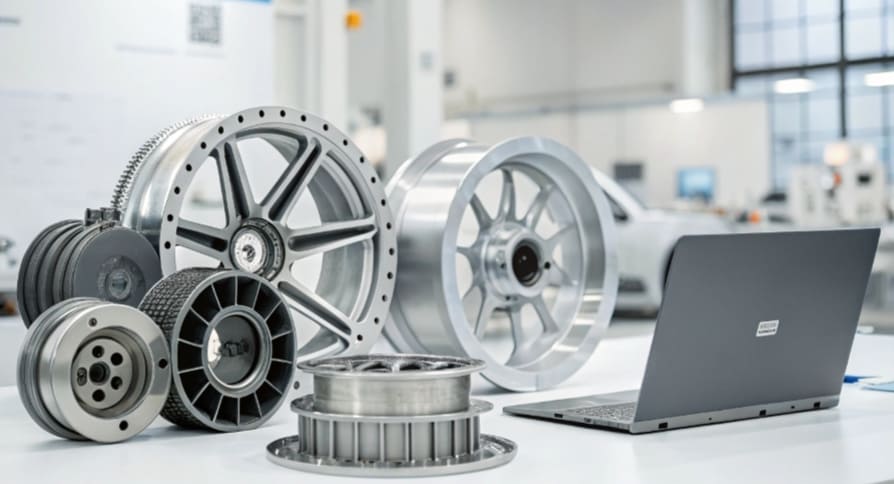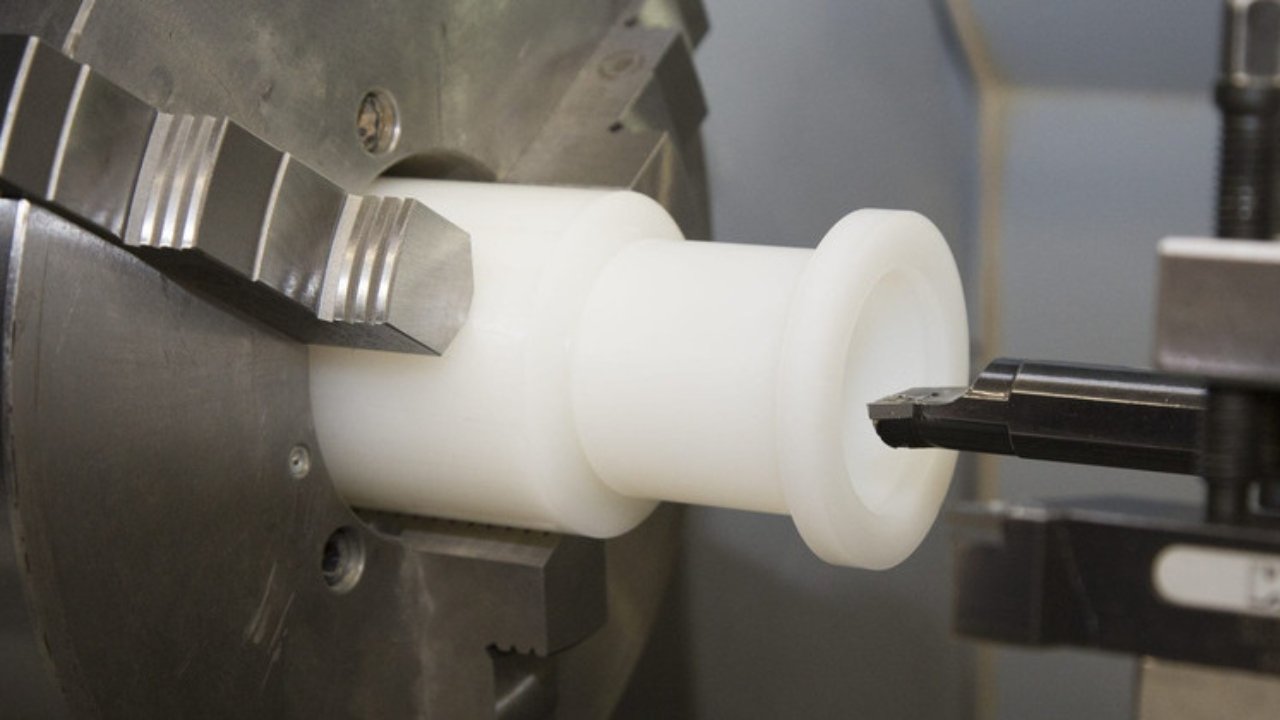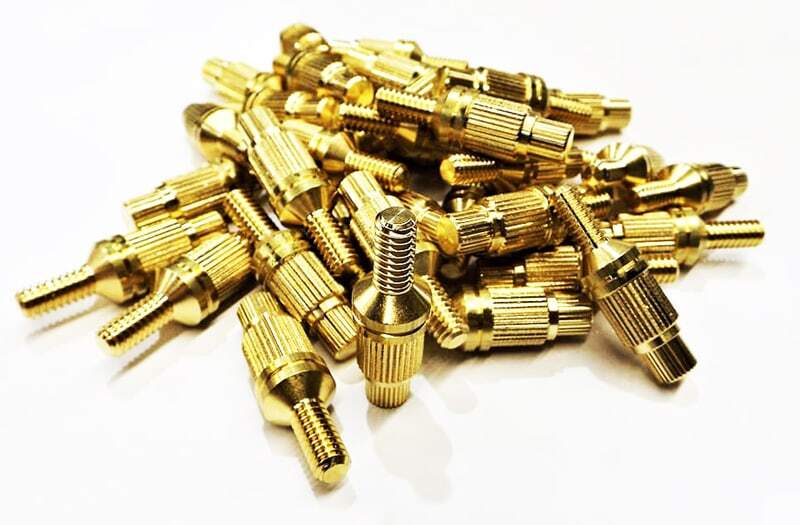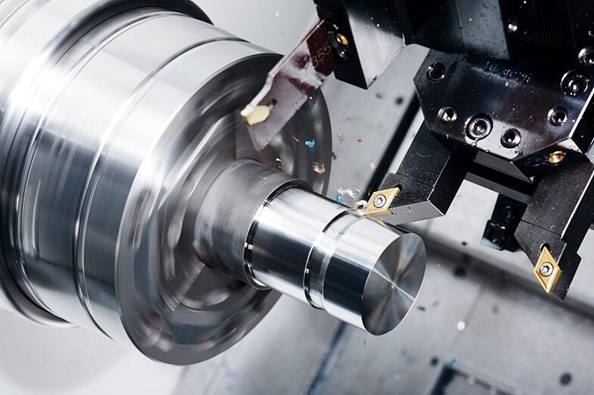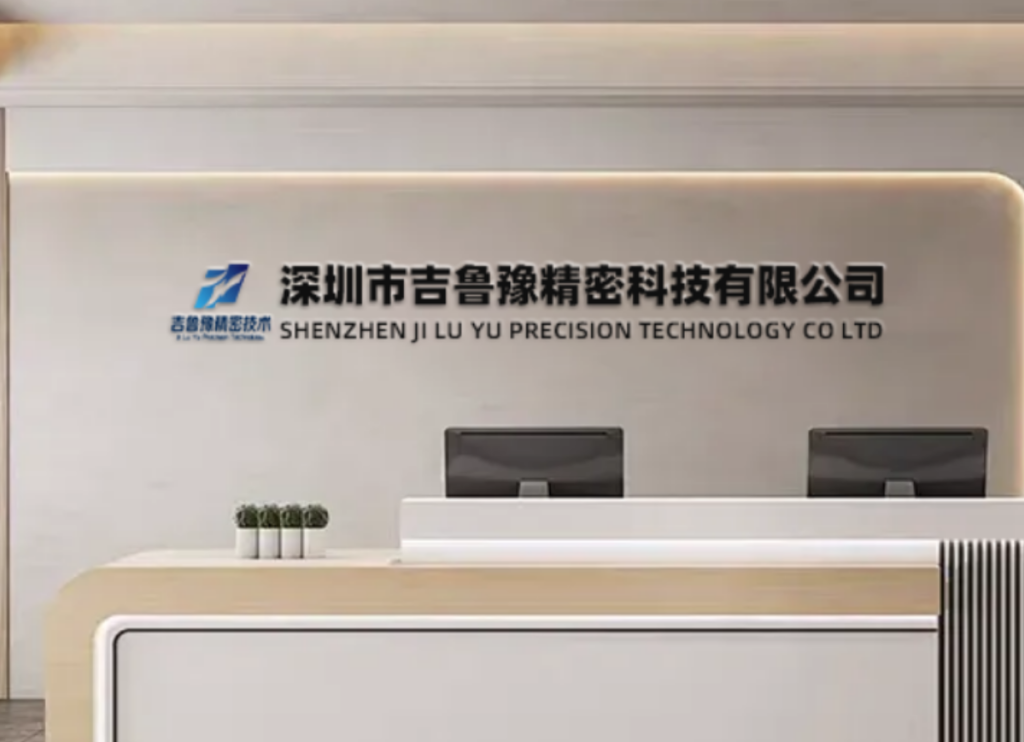Magnesium Alloy Machining for Lightweight Automotive Parts: The Complete Guide
Why Magnesium Alloy Machining is Revolutionizing Automotive Manufacturing
In the relentless pursuit of automotive efficiency and performance, magnesium alloy machining for lightweight automotive parts has emerged as a game-changing technology that promises to reshape vehicle design and manufacturing. As the lightest structural metal available, with a density of just 1.74 g/cm³ , magnesium alloys offer unparalleled opportunities for weight reduction in vehicles where every kilogram saved translates directly to improved fuel efficiency and reduced emissions. Magnesium alloy machining for lightweight automotive parts represents a specialized manufacturing discipline that combines advanced CNC technologies with deep material science expertise to produce components that meet the rigorous demands of modern automotive applications.
The automotive industry’s transition toward electrification has accelerated the adoption of magnesium alloy machining for lightweight automotive parts, as manufacturers seek to offset battery weight while maintaining structural integrity and safety standards. At JLYPT CNC Machining, we have mastered the art of magnesium alloy machining for lightweight automotive parts, developing specialized techniques that maximize the benefits of this remarkable material while addressing its unique manufacturing challenges.
Material Properties: Understanding Magnesium Alloys for Automotive Applications
Key Magnesium Alloy Grades for Automotive Components
The selection of appropriate magnesium alloy grades is crucial for successful magnesium alloy machining for lightweight automotive parts. Different alloys offer varying combinations of strength, corrosion resistance, and machinability:
AZ Series Alloys (AZ31B, AZ61A, AZ80, AZ91)
-
Excellent machinability with free-cutting characteristics similar to brass
-
Good strength-to-weight ratio for structural applications
-
Moderate corrosion resistance suitable for protected automotive environments
-
Primary applications: Transmission cases, steering components, bracket systems
ZK Series Alloys (ZK21A, ZK60A)
-
Enhanced strength properties through zirconium addition
-
Superior fatigue resistance for cyclic loading applications
-
Better high-temperature performance compared to AZ series
-
Primary applications: Wheel rims, suspension components, engine blocks
Rare-Earth Enhanced Alloys (Mg-Nd-Gd-Y systems)
-
Improved creep resistance at elevated temperatures
-
Enhanced mechanical properties through precipitation hardening
-
Superior corrosion performance in challenging environments
-
Primary applications: Powertrain components, turbocharger housings
Table: Magnesium Alloy Properties for Automotive Applications
| Alloy Grade | Density (g/cm³) | Tensile Strength (MPa) | Fatigue Limit (MPa) | Primary Automotive Applications |
|---|---|---|---|---|
| AZ31B | 1.77 | 255 | 120 | Interior brackets, seat frames, steering components |
| AZ91D | 1.81 | 230 | 110 | Transmission cases, valve covers, housing components |
| ZK60A | 1.83 | 365 | 165 | Wheel rims, suspension arms, engine mounts |
| AM60B | 1.79 | 240 | 115 | Instrument panel supports, pedal brackets |
| WE43 | 1.84 | 280 | 135 | High-temperature engine components, turbo parts |
Advantages of Magnesium Alloys in Automotive Design
Weight Reduction Benefits
-
70% lighter than steel and 33% lighter than aluminum for equivalent volumes
-
Significant mass reduction in rotating and unsprung components improves vehicle dynamics
-
Enhanced power-to-weight ratio for improved acceleration and handling
-
Reduced inertia in moving parts enables more responsive vehicle systems
Functional Performance Characteristics
-
Excellent damping capacity absorbs vibration and reduces noise transmission
-
Superior thermal conductivity facilitates heat dissipation from critical components
-
Good electromagnetic shielding protects sensitive electronic systems
-
High stiffness-to-weight ratio maintains structural integrity while reducing mass
Advanced CNC Machining Strategies for Magnesium Automotive Components
Tooling Selection and Optimization
Cutting Tool Technology
The exceptional machinability of magnesium alloys enables aggressive material removal rates, but requires specialized tooling approaches for magnesium alloy machining for lightweight automotive parts:
-
Micrograin carbide tools with sharp cutting edges for clean material separation
-
Polished rake faces and flutes to prevent material adhesion and built-up edge formation
-
Specialized coatings including TiAlN and AlCrN for extended tool life in high-volume production
-
Geometries optimized for magnesium’s low cutting forces and continuous chip formation
Tool Geometry Parameters
-
High positive rake angles (10°-15°) for reduced cutting forces and improved surface finish
-
Large clearance angles (8°-12°) to minimize rubbing and heat generation
-
Polished chip flutes for efficient chip evacuation in deep cavity machining
-
Reinforced tool shanks to prevent deflection during high-volume material removal
Machining Parameter Optimization
High-Speed Machining Parameters
Successful magnesium alloy machining for lightweight automotive parts leverages the material’s excellent machinability through optimized cutting parameters:
Milling Operations
-
Cutting speeds: 600-1,200 m/min for roughing, 800-1,500 m/min for finishing
-
Feed rates: 0.05-0.15 mm/tooth for roughing, 0.02-0.08 mm/tooth for finishing
-
Depth of cut: 2-8 mm for roughing, 0.5-2 mm for finishing operations
-
Stepover percentages: 40-70% for roughing, 10-30% for fine finishing
Turning Operations
-
Surface speeds: 500-900 m/min for external turning operations
-
Feed rates: 0.1-0.3 mm/revolution for roughing, 0.05-0.15 mm/revolution for finishing
-
Depth of cut: 2-5 mm for heavy roughing, 0.5-2 mm for finishing passes
-
Nose radius optimization for improved surface finish and tool life
Table: Machining Parameters for Magnesium Alloy Machining for Lightweight Automotive Parts
| Operation Type | Speed (m/min) | Feed (mm/tooth) | Depth of Cut (mm) | Tool Material | Cooling Method |
|---|---|---|---|---|---|
| Rough Milling | 600-900 | 0.08-0.15 | 3-8 | Uncoated Carbide | Compressed Air |
| Finish Milling | 900-1,500 | 0.03-0.08 | 0.5-2 | PVD-coated Carbide | Compressed Air |
| Contour Milling | 700-1,100 | 0.05-0.12 | 1-4 | DLC-coated Carbide | Compressed Air |
| Rough Turning | 500-700 | 0.15-0.30 | 2-5 | Sharp Carbide | Minimal Mist |
| Finish Turning | 700-900 | 0.08-0.15 | 0.5-2 | Polished Carbide | Minimal Mist |
Technical Challenges and Solutions in Magnesium Automotive Part Manufacturing
Thermal Management and Distortion Control
Heat Generation Management
-
High thermal conductivity of magnesium facilitates rapid heat dissipation from the cutting zone
-
Compressed air cooling prevents heat buildup without introducing corrosive coolants
-
Strategic tool path planning distributes thermal loads evenly across the workpiece
-
In-process temperature monitoring using infrared sensors for critical features
Distortion Minimization Strategies
-
Balanced material removal from all sides of the workpiece to maintain stress equilibrium
-
Sequential machining operations that allow stress redistribution between steps
-
Minimal clamping forces with specialized fixturing to prevent pre-stress introduction
-
Post-machining stress relief treatments for critical tolerance components
Safety Considerations in Magnesium Machining
Fire Prevention Measures
-
Sharp tool maintenance to prevent excessive heat generation from dull cutting edges
-
Proper chip evacuation systems to prevent accumulation of fine particles
-
Dedicated extraction systems with spark detection and suppression capabilities
-
Work area organization ensuring no magnesium chips contact ferrous metals
Process Safety Protocols
-
Dry machining preference to avoid hydrogen generation from water-based coolants
-
Regular cleaning schedules to prevent fine dust accumulation in work areas
-
Class D fire extinguishers strategically located throughout machining areas
-
Employee training programs covering magnesium-specific safety procedures
Quality Assurance for Magnesium Automotive Components
Dimensional Verification and Metrology
Advanced Measurement Systems
-
High-precision CMMs with temperature compensation for accurate dimensional verification
-
White light scanners for complex surface form verification
-
Laser micrometrology for non-contact measurement of thin-walled sections
-
Custom fixture gauging for high-volume production component verification
Surface Integrity Assessment
-
Surface roughness measurement using contact and non-contact profilometry
-
Microhardness testing to verify absence of work-hardened layers
-
Visual inspection protocols for defect identification on critical surfaces
-
Edge condition assessment for features subject to fatigue loading
Material and Performance Validation
Mechanical Property Verification
-
Tensile testing of witness samples from each material lot
-
Fatigue testing for components subject to dynamic loading
-
Hardness mapping across critical sections to verify consistency
-
Microstructural analysis to ensure proper grain structure and absence of defects
Functional Performance Testing
-
Dimensional stability testing under thermal cycling conditions
-
Corrosion resistance validation using salt spray testing per automotive standards
-
Assembly verification ensuring proper fit with mating components
-
Accelerated life testing for safety-critical automotive components
Automotive Application Case Studies
Case Study 1: Electric Vehicle Battery Enclosure
Challenge: An electric vehicle manufacturer required a lightweight battery enclosure solution that provided structural protection, thermal management, and electromagnetic shielding while minimizing weight impact on vehicle range.
Magnesium Alloy Machining for Lightweight Automotive Parts Solution:
JLYPT implemented a comprehensive manufacturing strategy for magnesium alloy machining for lightweight automotive parts:
-
Multi-axis CNC machining of ZK60A alloy billet for optimal strength-to-weight ratio
-
Integrated cooling channels machined with precise dimensional control for thermal management
-
EMI shielding features incorporating specialized geometries and surface finishes
-
Modular design approach enabling efficient machining of complex internal structures
Results:
-
42% weight reduction compared to aluminum design equivalent
-
Improved thermal management with 25°C lower operating temperatures
-
Successful EMI shielding exceeding automotive requirements by 15dB
-
15% cost reduction through optimized machining strategies and material utilization
Case Study 2: Transmission Housing for Performance Vehicle
Challenge: A sports car manufacturer needed a transmission housing that could withstand high torque loads while contributing to overall vehicle weight reduction and improved weight distribution.
Magnesium Alloy Machining for Lightweight Automotive Parts Solution:
Our advanced approach to magnesium alloy machining for lightweight automotive parts included:
-
High-speed machining of WE43 alloy for superior high-temperature performance
-
Precision bore machining with specialized tooling for bearing surface requirements
-
Integrated mounting features with tight positional tolerances for drivetrain alignment
-
Stress relief optimization between machining operations to ensure dimensional stability
Results:
-
35% weight saving compared to previous aluminum housing design
-
Enhanced structural rigidity with 20% higher specific stiffness than aluminum
-
Improved power-to-weight ratio contributing to vehicle performance metrics
-
Perfect alignment retention through thermal cycling from -40°C to 150°C
Case Study 3: Steering Knuckle for Luxury SUV
Challenge: A luxury vehicle manufacturer sought to reduce unsprung mass in their suspension system while maintaining the durability and safety standards required for SUV applications.
Magnesium Alloy Machining for Lightweight Automotive Parts Solution:
JLYPT’s sophisticated magnesium alloy machining for lightweight automotive parts methodology featured:
-
Five-axis simultaneous machining of AZ80 alloy forging for optimal grain orientation
-
Complex surface machining for aerodynamic and styling requirements
-
Precision bearing surfaces with specialized finishing techniques
-
Non-destructive testing integration throughout the manufacturing process
Results:
-
48% mass reduction in critical unsprung component
-
Superior fatigue performance exceeding 1,000,000 cycle test requirements
-
Enhanced vehicle dynamics through reduced unsprung weight
-
Corrosion protection system achieving 1,000-hour salt spray resistance
Future Trends in Magnesium Alloy Machining for Automotive Applications
Advanced Manufacturing Technologies
Digital Manufacturing Integration
-
IoT-enabled machining centers providing real-time process monitoring and adjustment
-
Digital twin technology enabling virtual process validation before physical machining
-
AI-driven parameter optimization based on material lot variations and tool condition
-
Blockchain-enabled traceability for complete component history from raw material to finished part
Hybrid Manufacturing Approaches
-
Additive and subtractive integration for complex geometries with optimized mass distribution
-
Functionally graded materials enabling localized property enhancement in critical areas
-
In-process quality verification with closed-loop correction systems
-
Automated adaptive machining compensating for material variations and tool wear
Material Science Advancements
Next-Generation Magnesium Alloys
-
Enhanced corrosion resistance through new alloying strategies and surface treatments
-
Improved high-temperature performance for powertrain and brake system applications
-
Advanced composite structures combining magnesium with other materials for specific properties
-
Sustainable alloy development focusing on recycled content and improved recyclability
According to recent research, magnesium alloys are poised to increase their automotive penetration from current levels of approximately 20 kg per vehicle to 50-100 kg per vehicle as manufacturing technologies advance and material properties improve .
Conclusion: Excellence in Magnesium Alloy Machining for Lightweight Automotive Parts
The manufacturing of magnesium components for automotive applications represents a sophisticated field that demands specialized expertise, advanced equipment, and rigorous quality control. Success in magnesium alloy machining for lightweight automotive parts requires not only mastery of machining processes but also deep understanding of material behavior, automotive requirements, and performance validation.
At JLYPT CNC Machining, our commitment to advancing magnesium alloy machining for lightweight automotive parts ensures that our clients receive components that excel in demanding automotive environments while optimizing manufacturing efficiency and cost-effectiveness. The future of magnesium component manufacturing will continue to evolve with material advancements, digital technologies, and smart manufacturing approaches driving improved capabilities and performance.
For automotive organizations seeking expert partners in magnesium alloy machining for lightweight automotive parts, JLY Precision Technology’s CNC machining services offers comprehensive solutions with demonstrated expertise in precision magnesium manufacturing for demanding automotive applications.

